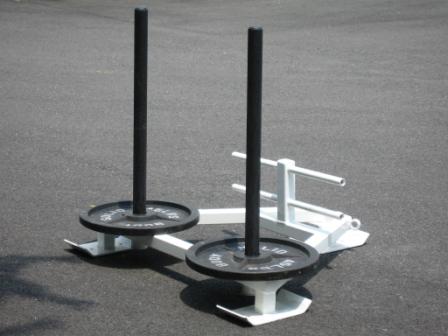Four Common Mistakes in the Gym
1) Overuse of Weight Belts
Here is a rule of thumb, don’t use a weight belt until you have a reason to do so.
A weight belt doesn’t have any magical powers, it is not a fashion statement and if you aren’t lifting more than your bodyweight and you are using good form then, don’t bother with a weight belt. People walk around the gym like they just pinned Hulk Hogan at Wrestlemania and they are pimping the Championship Belt. I have seen people do sit ups with a weight belt on, YES, you read that right, SIT UPS!!! If your back is so fragile that not wearing a weight belt will result in paralysis or an inability to stand then, you probably shouldn’t be exercising with weights in the first place.
2) TOO Much CORE work
Don’t spend so much time doing ab work.
I see some individuals spending 30-50% of their entire workout doing abs. WTF is wrong with these people??? The people who think training abs alone will give you great abs are the same people who think that eating fat makes you fat. This is a case of “monkey see, monkey do” because if you walk into any commercial gym, you will see more ab devices than you can shake a stick at. I guess the Squat Racks and Texas Power Bars must be on backorder J
One time I did a Boot Camp and there were about a dozen stations with various exercises including: overhead presses, goblet squats, pushups, hip bridges, etc. Afterwards one of the guys came up to me and said, “I thought that was good, but I would like more CORE work.” Before I continue, let me tell you about this guy. He is about 5 feet 5inches tall, probably weighs close to 200 LBS and has a beer belly that would make Homer Simpson proud.
Me: “Did any of those exercises work your CORE?”
Beer Belly: “Nope.”
Me: “Hmmmm…so, your CORE was not engaged when you did overhead presses, squats, pushups, etc….Actually, ALL of those worked your CORE!!! The CORE may not have been the primary focus in each exercise, but it provided the stability your body needed to properly perform each exercise. See the problem is that you have some fat blocking your CORE and all of the CORE work in the world isn’t going to show your abs. You need to lose fat for that. Losing fat is a function of conditioning and diet. I would work on those before worrying about direct CORE work.”
Beer Belly: [Blank Stare]
In this guy’s defense, the average individual needs to be better educated about diet and exercise; any professional in the Strength & Conditioning field will tell you that. His education regarding the human body came from the advertisement of the fifty different ab devices that get paraded around on infomercials at 3AM.
If and when you DO perform direct CORE work, do it RIGHT!!! A reverse sit up (lie flat on back and bring your knees to your chest) only involves movement of the LOWER half of your body!!! I can’t tell you how many people I see with their butt on a bench and they perform a quasi reverse sit up where their chest meets their knees in mid-air with both halves moving. It looks like me trying to open and close a beach chair at the Jersey Shore!!!
If you are performing multi-joint compound exercises (i.e. Squat, Deadlift, etc.) then, you are working your abdominals. This is not to say that you should never do any direct ab work. There is a time and a place for doing some reverse sit-ups, hanging leg raise, sit-ups on a decline bench with a weight plate on your chest, etc., but these are SECONDARY or “assistance” exercises. If your abs are the weak link preventing you from increasing your Deadlift or weak abs are causing you to lean forward or round your back in the middle of a squat then, that needs to be addressed, but abs are not an area that requires you to spend 20% or more of your training time on. Your abdominals provide your body with stability in just about every other exercise that you perform so, they already receive a tremendous amount of attention. If you can’t see your abs, focus more on tightening up your diet and do more conditioning work.
3) Inefficient Conditioning Methods
I love looking at the lost souls jogging on the treadmills with their potbellies, complete and total lack of muscle mass and faces that looks like the mask from Scream.
I don’t know who started the movement to “get on a treadmill and jog for hours on end”, but if I ever meet them, I will smash a 45 LB plate over their head. I don’t know about you, but the thought of jogging on a treadmill for a long period of time makes me want to go insane. I am not going to get into a big diatribe about interval training being better for fat loss than jogging; that is for a different time. My main focus is TIME. I always want the best results in the fastest time possible. I also get bored easily so, I can’t wrap my mind around jogging for 30-60 minutes. When I want to get in some conditioning work, I either do Sled pushes / pulls or Complexes.
a) Sled Work
Anyone who has played football, especially on the offensive or defensive line, knows what it is like to push a sled. The good news is that the sled work that I am referring to doesn’t involve you wearing pads in 90 degree heat with a Coach standing on the back saying that his mother can do better and she is in a wheelchair.
There are various types of Sleds including the famous “Prowler” from EliteFTS, but really any sled which allows you to load it with weight plates will do. Pushing or pulling a sled not only challenges your entire body, but it will ramp up your heart rate, get you breathing heavy and push you to the limit of your mental and physical ability.
b) Complexes
I think the best description of complexes was given by Strength Coach Dan John: “A complex is a series of lifts back to back where you finish the reps of one lift before moving on to the next lift. The barbell only leaves your hand or touches the floor after ALL of the lifts are completed.” Complexes can be performed with dumbbells, kettlebells or a barbell. I prefer to use a barbell.
Complexes allow you to burn fat AND build muscle at the same time. The key to setting up a complex is to ensure that the lifts logically follow one another in terms of body parts trained (i.e. don’t do 2 of the same parts in a row) and ensure that the weight is based on the weight you would use in the WEAKEST of the exercises (e.g. use the weight that you would shoulder press NOT the weight that you would Back Squat)
Performing Complexes is like doing interval training without running. Similar to interval training, Complexes produce EPOC (Excess Post-exercise Oxygen Consumption). EPOC is an increased rate of oxygen intake after performing very demanding or strenuous activity (e.g. interval training or complexes) to erase the oxygen debt and return the body back to where it was at rest before the exercise was performed. EPOC increases the body’s demand for fuel so, fat stores are broken down and released into the blood, hence, EPOC = fat loss.
Here are a couple examples of complexes that you can try:
Complex #1:
Upright Row,
Snatch,
Back Squat,
Shoulder Press,
Bent-Over Row
Complex #2:
Deadlift,
Bent-Over Row,
Power Clean,
Front Squat,
Push Press,
Back Squat,
Upright Row,
Snatch
Perform 6-8 reps (depending on the weight) or do a pyramid (4-3-2-1-2-3-4) where you perform ALL exercises at a certain number of reps and then repeat (i.e. 4 reps of each exercise (Deadlift through Snatch) then 3 reps of each and so on)
Rest 60-90s and repeat. It only takes about 8-10 minutes to be completely CRUSHED.
Sled Work and Complexes are more effective and efficient than jogging on a treadmill and they are both more challenging and fun too!
4) Routine does not match Goals or Ability level
Your routine (training regimen) is dependent upon your ability level and your goal.
I have seen both ends of the spectrum on this one. It usually involves a very skinny person or a very overweight person. They are doing body part splits like a Bodybuilder, yet, they cannot perform pushups, pull-ups or dips with their bodyweight using good form.
Ability level
Whenever I am dealing with someone for the first time, no matter what their condition or ability level, I always make sure that they can do basic bodyweight exercises with proper form. How can you squat 300 LBS if you can’t do a deep (hams to calves) bodyweight squat with good form? You always need to build a solid foundation. Once you have a strong foundation and the basic movements are fundamentally sound then, you can start loading the exercise.
Goals
If someone wants to lose weight, jumping into a Bodybuilding routine with body part splits is not the most sensible way to accomplish that goal. Frankly, even if someone wants to get huge, I wouldn’t start them out with a traditional Bodybuilding routine until they were very good with the basic compound movements: Bench Press, Back Squat, Deadlift. Those lifts give you the best bang for your buck and allow you to put on a good deal of lean mass very quickly. Your goals should define your routine. The “I want to be a FREAK” routine is different from the “I want to be lean and look good naked” routine. Though there are some overlaps, each goal and the routine which will best accomplish that goal efficiently and effectively are different
Using a weight belt too often, doing way too much CORE work, jogging on a treadmill for conditioning and having the wrong routine are just a few of the common mistakes that I see on a daily basis at the gym. Avoid the mistakes I mentioned above and follow the aforementioned advice and you will accomplish your goals more efficiently and effectively.
Did you enjoy this post? Buy me a cup of coffee ![]()









I have read your blogs with great interest. The last post was very good. Keep up the great job!!
Thanks Bill, I am glad you enjoy the blog. I will continue pumping out high quality content for you and everyone else to enjoy!!!
I own Pitt Meadows Athletic Club. I found your article very interesting and educating. May I put it on my website with a link to the source?? Let me know.
Anita, I am glad you liked the article. Feel free to put a link to the article on your website
[...] 4 Common Mistakes People Make in the Gym. [...]
Ken,
Great article! I absolutely agree 100% with you about pretty much everything you said. It is really sad to see how many people try to lose fat by doing exercises that only target the abdominals! How ridiculous. I kindly explain to them that I have a six pack and I NEVER do crunches or ab exercises!
One other thing, I have never heard of the term “complexes” before. Seems like the same thing as circuit training, right?
Thanks for explaining some common misconceptions so well!
Brandon